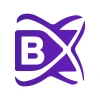Knowing what web application development is about is very important to know what its advantages are. Among the different possibilities they offer are their accessibility, compatibility, low price and maintenance .
In this post, you will learn in depth the characteristics of web application development and the different types that exist.
What is Web Application Development?
Web Application Development is that which allows creating tools that users can access through the Internet. On the website we can obtain information or interact with elements that allow communication between us, the users and the website.
The data from this type of application is stored on a web server or hosting in which, in addition to containing all the information, it is then sent to our devices. This factor makes the websites very practical, since you do not have to download anything to access them.
Features of a web application
It is worth mentioning that not all web applications have a series of characteristics in common, although there are several that are quite common:
They do not need to be downloaded and installed on the device , they are hosted on the server and can be accessed from any browser, avoiding any space limitation.They are very compatible and accessible. A single development of a web system is required so that they can run on different operating systems and be accessible from any device with an Internet connection.Its maintenance and update is simple. There is no incompatibility between versions because all users use the same one.Types of Web Applications
1. Static web application
This type of application is characterized by showing little information and because it does not usually change much. In the vast majority of cases they are usually developed in HTML and CSS, although moving objects such as banners, GIFs or videos can also be displayed in some part of the web application. Likewise, you can talk about web application development with jQuery and Ajax.
Modifying the contents of static applications is not an easy task, since it is necessary to edit the HTML and update it on the server. These changes are usually the responsibility of the webmaster or the development company that programmed the design of the web application.
Some examples of static web applications would be a portfolio, a resume or a simple web app development company presentation page.
2. Dynamic web application
Dynamic web applications are much more complex on a technical level. Since they use databases to load the information and these contents are updated every time the user accesses the web application.
There are many programming languages for developing dynamic web applications. The languages that stand out the most are PHP and ASP because they allow good structuring of the content. Typically, dynamic web applications have an administrator panel (CMS) to make changes.
The update process is simple and does not require entering the server to modify it. In addition, it allows you to implement many functionalities, such as forums or databases. The design of dynamic web applications can also be modified to suit the administrator.
3. Virtual store or e-commerce
The development of this type of web application is more complicated because it must allow electronic payments through credit card, PayPal or another payment method . The developer must also create a management panel for the administrator, with which products will be uploaded, updated or deleted and orders and payments can be managed.
Some examples of online sales web application projects are carried out by large companies such as Amazon . In this case, the web application adjusts to the mobile device as a mobile application, allowing you to interact with it as if it were a native app.
4. Portal web app
By portal we refer to a type of application in which the main page allows access to various sections, categories or sections. Some examples are the following: forums, chats, email, search engines, etc.
5. Web application with content manager
In the case of web applications in which the content must be continually updated, it is best to use a content manager (CMS) through which the administrator can make the changes himself.
These types of managers are intuitive and very easy to use . Some of the most used content managers currently are:
WordPress : the most widespread of content managers. There is a lot of information on the Internet, tutorials and guides to customize it, understand it and it is free.Joomla : It is the second in the top CMS, after WordPress. Although it does not have as many users, it does have a powerful community.Drupal : It is a free software CSM. It is very adaptable, and especially recommended for generating communities.We have explained the development of web applications and what computer application development is, its main characteristics, as well as the main typologies that exist in web apps to learn a little more about the variety of this web tool.
Build your own web applications with the guidance of our expert web app development company.



